
- Written by ZILA GmbH
- font size decrease font size increase font size
Dehumidification technology aH-Controlled briefly explained
What are the causes of moisture in buildings?
Moisture inside buildings can have several causes. In this context, user behaviour plays an important role. Ordinary things, such as showering, cooking, watering flowers and washing clothes but also wrong or missing ventilation lead to a higher moisture load.
Particularly in existing properties, leaking building shells, structural defects and the age of the building fabric are responsible for excessive moisture in the basement.
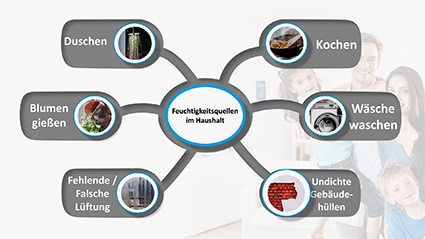
Why can moisture become a major problem in cellars, basements or living areas?
Humidity inside houses can become dangerous, both to humans and the building fabric.
It all starts with moisture accumulating in a room. If there is permanently more moisture in the room than the room air can absorb, condensation forms on surfaces. This often happens on windows and exterior walls because the temperature differences between the interior and the exterior are most significant there. As a conequence, mould growth becomes more likely, so without appropriate measures this problem will spread further and further.
How is mould formation caused and which health risks does this involve?
Mould is often associated with bad odours. Textiles are particularly susceptible to such bad odours. If the mould starts to spread and affect the walls and fixtures of a building, in the long term, this will cause damage to furnishings and the building itself.
The results of all of that is extensive and high-cost rennovation work. When residents are exposed to such conditions, it may also lead to considerable health risks for them. Therefore, many homeowners prefer conventional solutions in order to reduce the humidity within their properties.
It is thus recommended
- to do shock ventilations
- to remove sources of moisture or
- to use room dehumidifiers.
However, in many cases, those measures are insufficient, impractical or unsustainable.
- For shock ventilations, every time, someone needs to be present.
- The removal of moisture sources is often impossible, since this would restrict the usability of the premises.
- Even room dehumidifiers cannot solve the problem, as this approach is neither sustainable nor energy-efficient.
What is the best way to reduce the humidity sustainably in the long term?
Reducing the humidity with the aH-Controlled technology is sustainable, effective, simple, user-independent and leads to permanent cost savings. The aH-Controlled technology is based on the comparison of the absolute humidity indoors and outdoors. It also controls the ventilation processes to counteract condensation and mould formation. This principle of comparing the indoor climate with the outdoor climate is implemented in all our climate controls and exhaust air fans with the aH-Controlled logo.
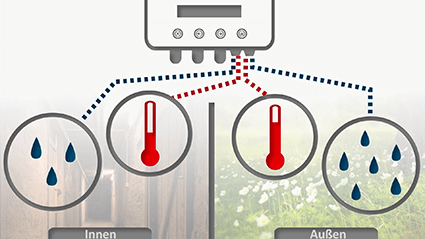
How can you assess the absolute humidity?
We would like to explain the innovative functions of our devices in more detail on the basis of a simplified example.
First, the climate control is positioned in the room. With the seperate outdoor climate sensor, the control unit measures the climatic conditions outside the room. We recommend the supply air fan to be positioned close to the outdoor climate sensor.
The indoor climate is monitored by means of an indoor climate sensor. In our example, this one is also connected with a cable for optimum positioning. To guarantee the best success in room dehumidification, we also recommend installing a fan for the exhaust air on the opposite wall.
The functional principle of our climate controls is based on a comparison of the climatic conditions inside and outside a room. They dehumidify rooms in an energy-efficient and cost-saving way by determining optimum ventilation times. The supply air fan brings in drier air from outside, while the exhaust air fan simultaneously removes the moist air from inside. This ensures an optimum air exchange and thus a faster dehumidification success. The ventilation cycle ends automatically. According to the principle of impulse ventilation, a ventilation cycle is followed by a passive time. After this, a new comparison of the absolute humidity is made and a new ventilation cycle can begin.
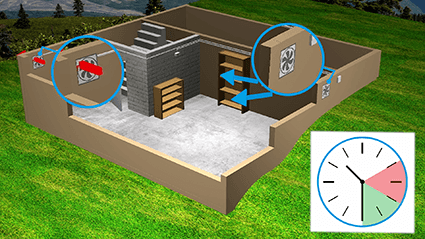
Our products with aH-Controlled technology
ZILA currently offers three products for needs-based, automatic dehumidification of rooms.
| Device | Product description |
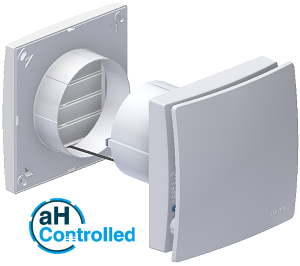
|
The exhaust air fan Aero aH_100 is a small room fan with an integrated dehumidification control. Equipped with our aH-Controlled technology, cellars, garages and washrooms of up to 30 m² can be monitored and ventilated fully automatically. |
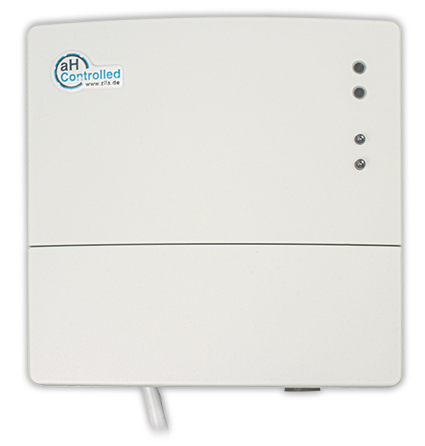
|
With its modern, compact and attractive design, the climate control KST-20 Calima is suitable for dehumidification of larger rooms, since a wide range of external actuators, such as window openers, ventilation flaps and fans, can be controlled automatically. |
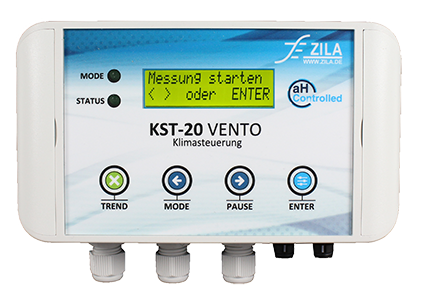
|
The climate control KST-20 Vento offers an intuitive, graphical menu, which can be navigated by the four operating keys. With comfort functions, such as frost protection and adjustable humidity levels, rooms can be dehumidified safely and efficiently. |
From the cellar and basement over living spaces to public buildings - any room can be dehumidified decentrally with this technology.
